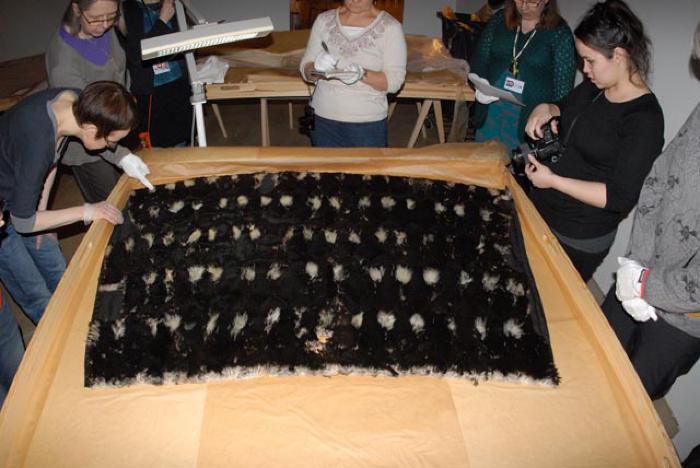Blanket — Ulik

Before the introduction of western mattresses and blankets, Alutiiq people slept on piles of soft, dry grass and covered themselves with bear hides. These warm, insulating materials provided bedding both at home and while traveling. A person who had to camp unexpectedly simply collected a pile of grass for sleeping. Elders recall that Old Harbor residents fleeing the tsunami that followed the 1964 Great Alaska Earthquake wrapped themselves in bundles of grass as they waited on the hillside for the water to recede. Campers made another type of mattress by piling grass and moss over branches and covering the pile with a woven grass mat.
In the historic era, seamstresses blended Alutiiq and western traditions by fashioning European-style blankets from traditional materials. One such blanket, collected in the Alutiiq region in the early twentieth century, is now part of the Milwaukee Public Museum’s collection. Sewn from eider skins (Somateria spp., a type of sea duck) this piece is 55 inches wide by 88 inches long. It has two separate layers of skins, one forming the front and one forming the back. On the front, the seamstress stitched more than forty-eight rusty brown, female eider skins into a rectangular panel and then created an elaborate border using the colorful throat skins of fifty-two male king eiders. The result is a beautiful bird-skin quilt.
